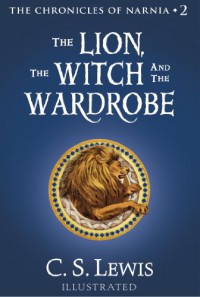
The Lion, the Witch and the Wardrobe (Chronicles of Narnia, #2)
 Revisiting childhood favorites as an adult is always a risky task-- will it hold up to nostalgia? Or will it fall apart under closer examination?
Revisiting childhood favorites as an adult is always a risky task-- will it hold up to nostalgia? Or will it fall apart under closer examination?The Chronicles of Narnia manages to do both.
But first, it’s important to address whether or not THE LION, THE WITCH, AND THE WARDROBE is the first or second book in the series. The HarperCollins Kindle version currently places it in chronological order as the second book, but the original publication order works better upon reflection. For one, THE LION, THE WITCH, AND THE WARDROBE is very self-contained story, which cannot be said for THE MAGICIANS NEPHEW. Furthermore, TLTWATW introduces the basics of Narnia in a very straightforward manner that matches the plot and development of the lead characters—no knowledge of the other books is required. It's perfect for easing the audience into the series, especially if they're younger.
The story itself holds up surprisingly well, despite its tendency to patronize the readers every now and then. It takes true talent to make an abstract fantasy world both understandable and engaging to younger readers, and it’s safe to say that C. S. Lewis succeeds admirably. Even beyond that, of the many "real world people stumble into a fantasy world" stories that have been published over the years, THE LION, THE WITCH, AND THE WARDROBE still stands out because of its focus on family and virtues. While many convincing arguments can be made about the overt Christian allegories present in the narrative, I’ve always seen the book as a kid-friendly Arthurian romance—and it works better as one. There's nuance to be found in the themes of forgiveness, sacrifice, and redemption, especially in conjunction with the perversions of those very values in later Narnia stories.
The only real flaw of the book is the pacing. While reading this story to my sisters, it was hard to keep their attention early on thanks to the rambling descriptions of various rooms or activities taking place in the real world. I distinctly remember having the same issues when I first read the book almost two decades ago. As society moves further and further away from the 1940s, one must wonder how relatable the first third of the book will be to future generations. Meanwhile, everything from the introduction of Aslan onward happens much too fast. The story shines when the focus is on the children, but the ending doesn't seem to know what to do with them. Thus, it resolves instead to juggle them around the lion and several convenient magical concepts. Far too often, I had to stop and answer questions from my very confused siblings.
Nonetheless, I'm glad I reread THE LION, THE WITCH, AND THE WARDROBE for the first time since elementary school. It may not be the best children's book ever, nor even the best in the series, but it definitely holds a place in my heart.

















